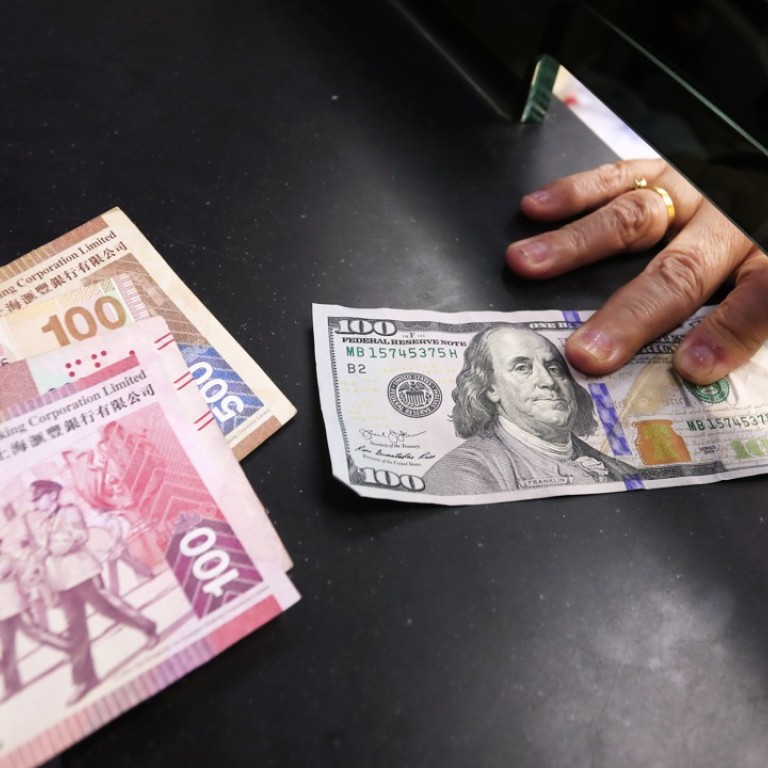
Hong Kong’s bill for defending city’s currency since April stands at HK$52.9 billion
The city’s de facto central bank has bought a total of about HK$52.9 billion since April to support the local dollar
The Hong Kong Monetary Authority, the city’s de facto central bank, intervened in the foreign currency market to defend the Hong Kong dollar on Tuesday, bringing its total purchases of its own currency since April to about HK$52.9 billion (US$6.7 billion).
It bought HK$1.57 billion of the currency during New York trading hours as the Hong Kong dollar hit the 7.8500 per US dollar level, the lower end of its permitted trading band.
The total intervention is expected to reduce the city’s aggregate balance, a measure of banking liquidity, to about HK$127 billion from HK$180 billion in April, when the HKMA first started intervening.
The Hong Kong dollar was pegged at HK$7.80 to the US dollar in October 1983, with a trading band of 7.75 to 7.85 introduced in 2005. The HKMA is obliged to intervene to prevent the currency from trading outside this range. The currency traded at 7.8499 on Wednesday morning.
Asian currencies have been pressured in recent weeks because of a spike in the US dollar amid expectations of higher US interest rates. Analysts expect the Federal Reserve to raise rates three more times this year, with the next increase expected in June.
Traders have been selling lower-yielding assets such as the Hong Kong dollar to buy US dollars that give higher returns, adding to other strains on the Hong Kong currency including worries over a slowdown in the mainland China economy and trade frictions with the US.
On Wednesday the one-month Hong Kong interbank rate, or Hibor, dropped for a 10th straight day to 0.993 per cent, widening its spread with its international Libor counterpart, and showing that the impact from HKMA’s currency intervention on tightening banking liquidity remained modest.
Analysts said the Hong Kong dollar was likely to remain near the lower end of its trading range at least for the coming weeks.
While the HKMA base rate has risen with US rates, the city’s prime rates, which range between 5 per cent and 5.25 per cent depending on individual banks, have not changed since 2008 because of abundant liquidity in the financial system.
Standard Chartered Bank expects Hong Kong banks to only consider raising prime rates from the third quarter. The aggregate balance is estimated to fall below HK$100 billion and the US-Hong Kong interest rate gap will close, allowing the currency to move away from the edge of the band.
The Hong Kong dollar could also get a lift in the second half when Chinese mobile phone giant Xiaomi debuts on the Hong Kong stock exchange in its much-vaunted initial public offering, which bankers have put at as much as US$10 billion.
Norman Chan, the HKMA’s chief executive, reiterated on Tuesday that it was unrealistic to expect Hong Kong interest rates to be kept at a low level.

